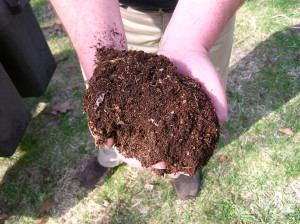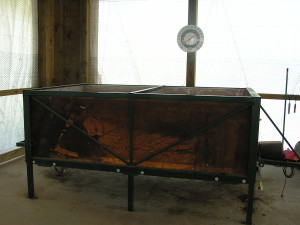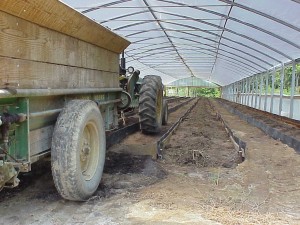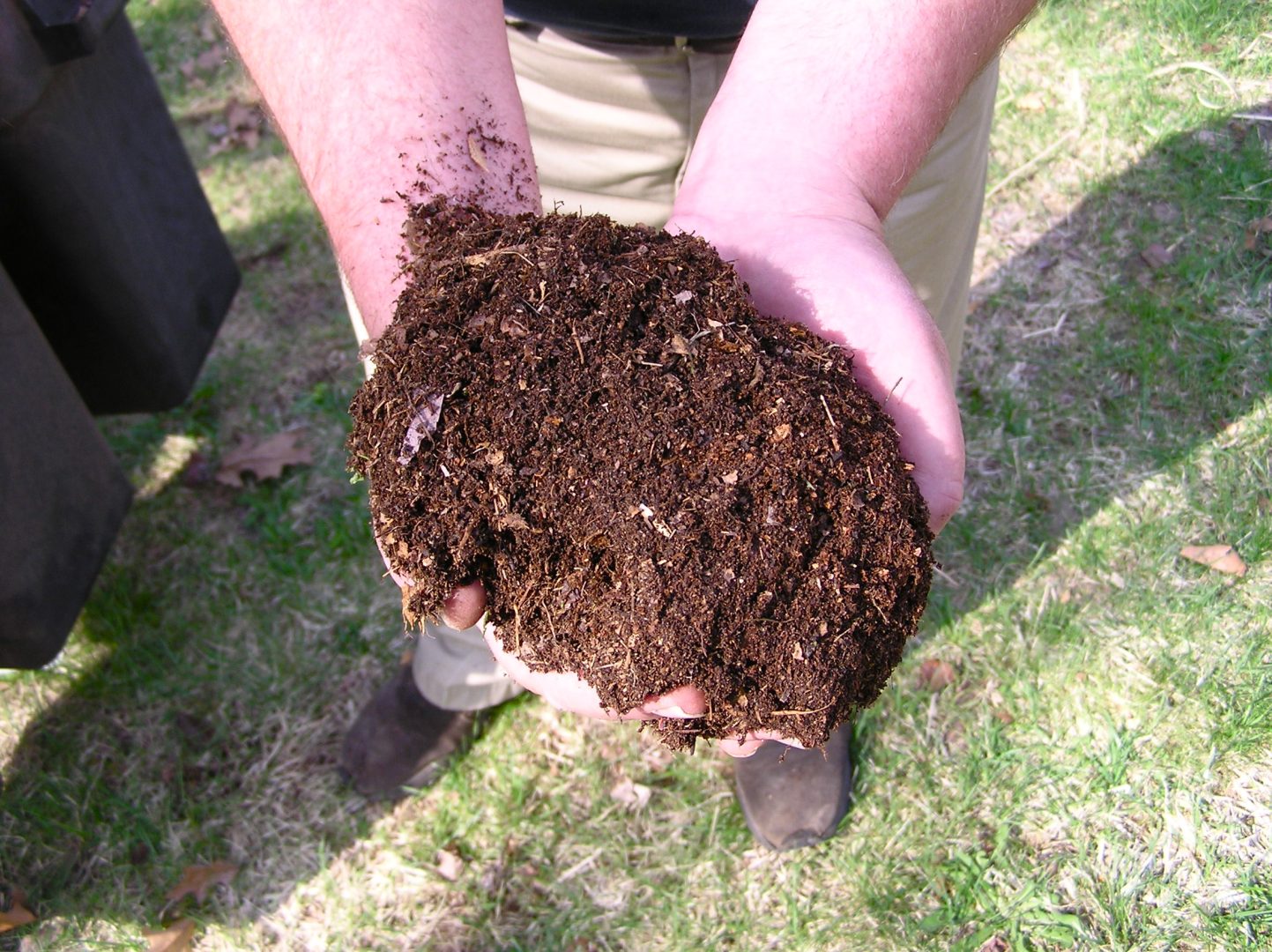By guest blogger, Rhonda Sherman, who will be speaking at the Sustainable Ag Conference during Saturday’s Soil and Seeds Track.
Looking to diversify your farm income? Interested in converting manures and crop residues into value-added products? Vermicomposting may be an option for you. It is a process that relies on earthworms and microorganisms to convert organic materials to a valuable soil amendment and source of plant nutrients. Vermicompost can improve soil quality, increase plant yields, and suppress diseases and pests. You can produce vermicompost for use on your farm or gardens, or you can sell it for $400 to $1,300 per cubic yard. Markets include greenhouses, vineyards, farms, nurseries, golf courses, turf fields, landscapers, and homeowners.

Numerous published scientific studies have demonstrated positive effects of vermicompost on plants. As little as 2 percent (by volume) vermicompost can significantly accelerate seed germination and increase plant growth, flowering and yields. These increases are usually independent of nutrient availability. There are also documented decreases in attacks by plant pathogens, parasitic nematodes, and insects.
Feedstocks for vermicomposting include animal manures, food preparation residuals and leftovers, scrap paper, agricultural crop residues, organic byproducts from industries, and yard trimmings. During the Sustainable Ag Conference workshop, we’ll discuss feedstock choices, preparation, loading rates, consumption, and output rates.

Farmers are choosing to vermicompost manure and crop residuals for several reasons: some need an environmentally-beneficial alternative for manure management; others want to produce vermicompost to increase their crop yields and reduce their use of fertilizers, herbicides and pesticides. And some farmers choose vermicomposting to increase their income from the sales of earthworms or vermicompost.
At the Sustainable Ag Conference workshop, we will also discuss the following topics:
- Differences between vermicomposting and composting
- Benefits of vermicompost and its liquid extract
- Using the correct species of earthworms
- Earthworm husbandry
- Equipment options and site requirements
- Management issues
- Storing vermicompost
- Difference between castings and vermicompost
- Tricks to watering the worm bin
A lot of misinformation about vermicomposting is being passed around, so I will also be discussing the myths and realities of vermicompost production.
I will have lots of photos of vermicomposting facilities so you can see options that vary from low-cost to high-tech. Here is a photo of a vermicompost operation that used to be at a hog farm in North Carolina:

Rhonda Sherman has been contacted by people in 105 countries seeking her expertise in vermicomposting. For 16 years, she has organized the world’s only annual conference on large-scale vermicomposting (the latest had attendees from 6 countries and 25 US states). Rhonda is co-editor of the only scientific book on vermicomposting: Vermiculture Technology: Earthworms, Organic Wastes, & Environmental Management. She’s been an extension specialist at NC State University in the Department of Biological & Agricultural Engineering for 22 years, and is Director of the university’s Compost Training Facility. Rhonda regularly teaches and writes about small-to-large scale vermicomposting and composting, and serves as president of the NC Composting Council. To learn more about vermicomposting and composting, follow the links at http://www.bae.ncsu.edu/people/professionals/sherman.


